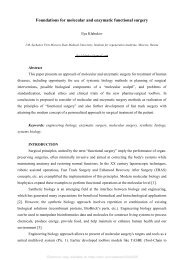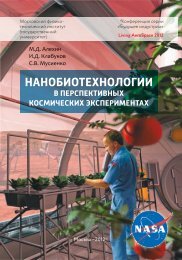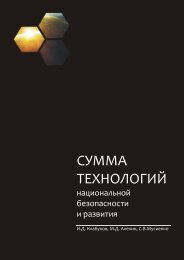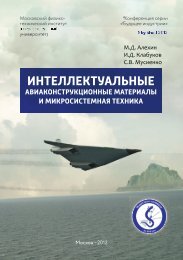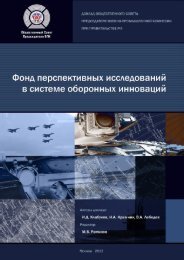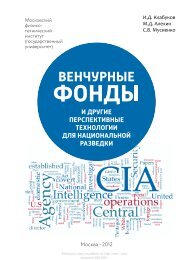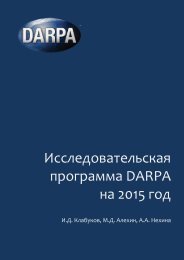Engineering Biology Problems Book (2021, Obninsk Edition)
Create successful ePaper yourself
Turn your PDF publications into a flip-book with our unique Google optimized e-Paper software.
temperature-dependent expression of proteins and metabolism in them. The method of “switching”
could be regulatory proteins that denature at the temperatures you want.
3.13. Bacterial Klondike. Hypothetically, in the future, the exhaustion of the known sources of some
ores may become a problem, and their new search may be difficult or limited. Bacteria are capable of
degrading metal sulfides, making it cost-effective to develop landfills, dumps, and other potential
sources of rare earth and precious metals (bioleaching). At the same time, the stage of cyanidation
remains relevant, based on the selective dissolution of metals in weak solutions of cyanides (NaCN,
Ca (CN) 2, KCN) and their subsequent precipitation from solutions on zinc dust, ion exchangers,
activated carbon. Describe a biotechnological process for extracting metals from poor ores based
solely on biotechnology.
SOLUTION:
Bacterial leaching is a well-known method of intensifying the process of extracting valuable
components from rocks (for example, U, Cu, Au, etc.) using microorganisms. For example,
chemolithotrophic bacteria of the genus Thiobacillus leach iron, copper, zinc, uranium, and other
metals, oxidizing them with sulfuric acid, which is formed by these bacteria from sulfide; the
chromobacterium Chromobacterium violaceum dissolves gold. However, a completely
biotechnological process of enrichment of poor ores will require either 1) the accumulation of metal
salts in bacteria, or 2) the inclusion of compounds in the matrix of bacterial biofilms.
3.14. Artificial uterus. The development of the fetus in placental mammals requires not only
nutrition but also the presence of a wide repertoire of proteins, signaling molecules, etc. Of interest
are the ability of marsupials to carry a fetus in a pouch from the 12th to 28th day of embryo
development, as well as the principle used by oviparous mammals. Compare these approaches
(placental, marsupial, oviparous) for the technological simplicity of in vitro implementation of an
artificial womb for reproductive genetics and cloning.
SOLUTION:
The solution to the problem is under development.
3.15. Large production facilities. In 2003, in the state of Oregon (USA), the largest living object on
the planet was discovered - the mycelium of common honey agarics (Armillaria ostoyae), with an area
of almost 10 km2 and an age of up to 8500 years. Most of it is hidden from view and lies underground
in the form of a massive bed of tendril-like white mycelium (mycelia, the mushroom equivalent of
roots). This concept of mega-organisms seems attractive for organizing agricultural objects. Suggest a
scheme for their use to eliminate the need for measures to restore soil fertility.
SOLUTION:
The problem of genome homogeneity and high risks of infection with one effective parasite. We invite
the reader to consider the case of "Pando" - a clonal colony of aspen poplar, which covers 43 hectares,
the weight of the plant is estimated at 6,000 tons, which makes it the heaviest known organism. The
age of origin is estimated at 80 thousand years [77].
[77. Genetic Variation and the Natural History of Quaking Aspen, Jeffry B. Mitton; Michael C. Grant,
BioScience, Vol. 46, No. 1. (Jan., 1996), pp. 25-31]
3.16. Food engineering. You can imagine a world in which the best fruit is the one that you not only
grew but also designed yourself. Seedling preparation, greenhouse equipment, fertilization, lighting,
and watering may well be deployed at home. Offer a technological platform for the design and
implementation of the principle of self-design of fruits and vegetables for an ordinary citizen with
minimal skills.
SOLUTION:
The solution to the problem is under development.
3.17. Home kitchen. Using the result of task 3.16 “Food engineering” suggests a model for growing
plant products in a city apartment. Which plant would you choose as a basic organism for further
development and implementation of functional modules
SOLUTION:





